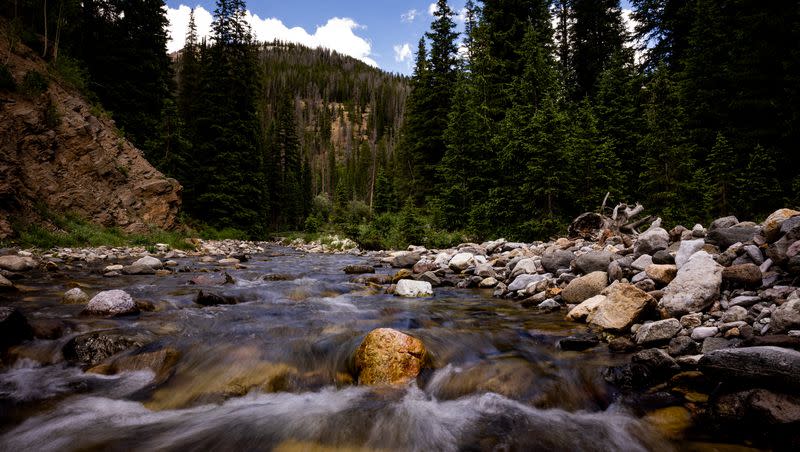Saving the Colorado River: An acre-foot at a time in the Upper Basin

The four states are not taking land and they are not buying water rights. But the Colorado River is in trouble and the Upper Basin states are saving water where they can when it comes to consumptive use.
Consumptive use is different than diversions. It means letting some fields grow dry, or doing a split season of irrigation. It can mean growing different crops.
The Upper Basin consists of Utah, Colorado, New Mexico and Wyoming.
The new concept is called the System Conservation Pilot Program. And a staff engineer with the Colorado River Authority of Utah explained to the Utah Water Task Force this week that it is beginning to work.
“The Colorado River Basin is facing water scarcity,” said Lily Bosworth.
Related
Utah’s clawing way out of an extreme water deficit. Will it last?
The Colorado River is the lifeblood of the West. How much longer will it last?
The $125 million appropriated by the U.S. Bureau of Reclamation is fueling a program that has resulted in 64 projects across the four Upper Basin states, including 20 in Utah.
Altogether, the projects have saved consumptive use on the Colorado River in the Upper Basin by about 38,000 acre-feet of water. Utah, as part of that group, saved 15,090 acre-feet.
The going rate is $442 per acre-foot of water compensated for water saved. An acre-foot is enough to cover one football field by one foot of water.
Even Bosworth admitted it is a drop in the bucket, but shifting the mindset on consumptive use of water is a good beginning.
The System Conservation Pilot Program represents an opportunity for temporary, voluntary and compensated reduction in consumptive use (or depletion) of agricultural, municipal or industrial water in the Upper Colorado River Basin.
Bosworth said one of the biggest components of the program is that it is voluntary, but it’s part of a mandate by the U.S. Bureau of Reclamation that between 2 million acre-feet and 4 million acre-feet be saved for the ailing river in the entire Colorado Basin.
If the Colorado River goes down, it has ramifications for supplying the arid states in the West, power generation, entire ecosystems and more.
Related
The river supplies water to 40 million people and irrigates millions of acres of farmland, including California’s “breadbasket,” which is vital to the U.S. food supply chain.
Related
The Upper Colorado River Basin responded with a five-point plan which includes the reduction of consumptive use of the water.
Bosworth said it might mean fallowing a field, or a split growing season or switching to a different crop altogether that uses less water. Farmers and ranchers do not give up their water rights, but are compensated for the water they relinquish.
The program is evaluated on a case-by-case basis and has a number of requirements. But Bosworth says she believes it is making a dent in its infancy.
“There is no demand management, but there is this assumption it goes back into the river.”
The next applications for 2024 are due Dec. 18. Bosworth said there is a list of qualifications and requirements on the Colorado River Authority of Utah’s website that will help guide people through the process.
The applications will be reviewed early next year.
It is tricky, she conceded, because there is a minimum requirement of 40 acres of land, but people can come together to combine forces. If someone has 30 acres of land using water to be forsaken on a temporary basis, and another person has 10 acres of land that will possibly come to a contraction negotiation, that proves fruitful.
“There is a Utah statute that protects water rights if they participate in a federal conservation program. And so that’s where this program falls.”

